Mudras & Hand Symbolism--the
Power of Mudras Part 3 : |
MUDRAS & HAND SYMBOLISM--THE POWER OF MUDRAS
PART 3 :
HAND SYMBOLISM & BELIEFS
Human hands have never lost their fascination to our ancient forefathers,
and even now in contemporary times, the novel roles that hands play in the
humanities with their dexterity and grace never cease to amaze us. The wondrous
execution of a Chopin piece, or an objet d' art fabricated carefully by a
master hand--they constantly evoke a sense of joy and wonder within us. The
Spirit within us responds positively to the beauty, the harmony, and the
symmetry of sound and form as
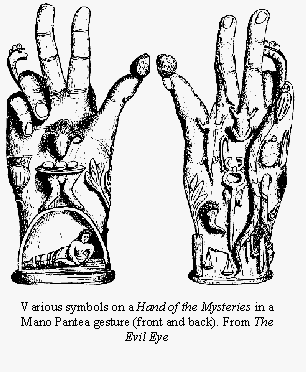 manifested
by Nature and human hands.God's gift to man is the freedom of choice and
the will to implement that choice.
manifested
by Nature and human hands.God's gift to man is the freedom of choice and
the will to implement that choice.
On the physical plane, the hands are naturally the instruments of that will and divine blessing and have come to symbolize Man, or Adam; for only beings on the evolutionary level of man are given the prerogative to determine their own fate. It is said that not even angels have this freedom to choose, for their nature compels them to abide by the divine law. Man on the other hand, through choice, learns what it means to align himself with, or to disobey Cosmic laws. Man learns the consequences of his actions, and wise is he who takes responsibility for them. Through choice man succumbs to his lower nature and builds pandemonium in his mind and heart or he may give ear to the prompting of his divine Self and form the New Jerusalem--the new abode of peace in the lower aspects of his microcosm that this condition may become ingrained in his character and nature. By choosing the latter, the teaching of the Master Jesus--"Neither shall they say, lo here! or, lo there! for, behold, the kingdom of God is within you" (Luke:17:21)--shall come to pass.
God, Nature, and the higher worlds communicate with Man in various ways--through
dreams, through the intuitive and psychic faculties, through symbiotic energy
exchange, signs, omens, and especially symbols. Basically, symbols may be
classified as natural and artificial. Natural symbols are found in nature.
Artificial symbols are those that we invent ourselves and assign certain
basic meanings to them. Certain occult symbols--of the natural and artificial
types--are known to Adepts and the multitude of beings in the spirit world.
Most of these symbols have their origin in archetypal realms in the mental
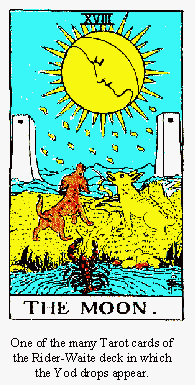 planes. Utilizing
these in metaphysical or magickal ceremonies, rites and rituals, facilitates
communication and the synergy between habitants of worlds and realms.
planes. Utilizing
these in metaphysical or magickal ceremonies, rites and rituals, facilitates
communication and the synergy between habitants of worlds and realms.
Objects of nature are outward symbols of inner realities within our psyche. Understand one and we will eventually understand the other. Master the inner realities and the outward symbols assume a congenial expression to correspond with the inner psychological condition. Since our hands are related to the will aspect of the Spirit, empowering one will have its effects on the other. We will not delve too deeply into this for it will take us too far into the Magical Tradition and beyond the subject matter of this article. Suffice to say that contrary to the understanding of most metaphysical students, Masterhood or adeptship has very little to do with psychicism and much to do with the magick of the divine will within man--the will to love, the will to serve, the will to sacrifice, the will to self-forgetfulness, the will to selflessness, the will to give, the will to create, the will to surrender, the will to be pure, the will to forgive, the will to be open-minded, the will not to be judgmental, etc.--most important of all, the will to implement the promptings of the Divine Spark within the microcosm.
Our hands should not be undervalued. Without them we are less effective in carrying-out our mission in life. In the higher worlds we express our creativity through thought--mind-generated sounds, colors, and light. All of these occur instantaneously with thought as the creator. Because of the density of physical matter and the factor of time, something other than the above means are required to fashion things in concordance to our desire and thus assist us to fulfill our purpose for being incarnated in the three-dimensional realm. Our hands are a projection of this need. In the higher worlds, our subtle bodies in their primitive state did not possess hands, and even though now that the astral and etheric bodies have evolved and assumed the human form, the incorporeal limbs may be dispensed with for they are not essential for us to function in the higher dimensions.
Having stated the importance of hands here in the physical plane, let us now inquire briefly into hand esotericism, symbolism, signs and the various beliefs regarding them. Though our treatment of the subject here leaves much to be desired, the metaphysical student will find many things here of great interest and they would certainly be stimulated to research further.
Because of their importance, many beliefs grew concerning the hands. Countless
symbols and signs were created using the
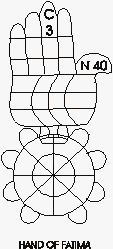 hands to convey
knowledge and information to those who understood the underlying keys of
the secret teachings taught in esoteric schools.
hands to convey
knowledge and information to those who understood the underlying keys of
the secret teachings taught in esoteric schools.
In religion, hands symbolize the divine presence, influence and power. In Catholicism, the power and influence of God is often portrayed in medieval paintings and murals as an almighty hand issuing from the clouds to convey something of spiritual importance to saints and prophets. Actually, the "All-Powerful Hand" has its origin in ancient Egypt. The monotheistic Pharaoh, Akhenaton (1379-1362 B.C.) and Queen Nefertiti of the 18th dynasty are often depicted in sculpture relief as receiving energy from Aton, who is represented by a sun-disk. This can be seen in the tombs at Tel-el-Amarna. Rays of the sun-disk are portrayed as elongated arms terminating in hands reaching out to the royal couple and bestowing upon them the life-force. The mystical Qabbalistic tradition of Judaism assigns the human hand as the symbol of the letter Yod (y). Having the numerical value of ten, which relates to the ten fingers, the letter Yod is recurrently depicted in esoteric art as "rain drops" showering from heaven. Example of these may be seen in the Rider-Waite Tarot deck.
Modern Catholics present the hand of Jesus as the Hand of Power or "Mano Poderosa." In the depiction of the crucified hand, all of the fingers are extended with various saints standing upon the digits. We present a version of the hand here with a scholar's commentary :
"The image is of a huge wounded (but not bleeding) right hand, which points up through clouds, cut palm toward us. The lines in the palm are shown, and it looks like the head line is cut. The fingers are all of eerily uniform length, with a long thin thumb. Small, disembodied, winged cherub-heads float in the sky above the hand."To the left and right of the hand are four kneeling female angels who gaze upward and bear the tools of the crucifixion. Of the two on the left, one holds a bowl to catch Jesus' blood; the other holds a spear and vinegar sop in one hand and hammer and nails in the other. Of the two on the right, one holds a cross and the other a crown of thorns.
"Atop clouds on the little finger stands an older male saint with a book. The ring finger's clouds hold a female saint; the middle finger's, a younger male saint with a white lily; the forefinger's, the Virgin Mary; and the deformed thumb's clouds bear the toddler Jesus holding a globe in his right hand and raising his left."
From the above we may surmise that not only are hands the symbol of Man,
they are also the symbol of divinity, for the sacred hand of the Divine One
have its influence upon the mundane affairs of humanity when men have gone
too far astray from the path of Truth and righteousness. Scriptures are replete
with stories of divine intervention or action with materialized hands as
a media of information conveyance or operation. Not only did the hand of
God "inscribe" the Ten Commandments
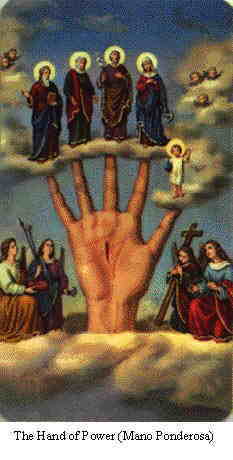 upon the stone
tablets prepared by Moses, it also warned Belshazzar of his impending doom--a
spirit hand materialized and wrote on the wall "Mene, Mene Tekel, U-pharsin"
(Daniel 5: 24-25). From a metaphysical point of view, this is not unusual.
Such manifestations are actually the work of what is called in occultism,
"Invisible Helpers." These are initiates with occult and paranormal abilities
working on behalf of humanity. They work on the higher dimensions in their
nightly excursions through "astral projection." Some of the higher initiates
have the ability to materialize their hands or other parts of their body
so that they may function directly on the physical sphere aiding those here
who are in dire distress or as in the case above, as a warning to arrogant,
tyrannical rulers.
upon the stone
tablets prepared by Moses, it also warned Belshazzar of his impending doom--a
spirit hand materialized and wrote on the wall "Mene, Mene Tekel, U-pharsin"
(Daniel 5: 24-25). From a metaphysical point of view, this is not unusual.
Such manifestations are actually the work of what is called in occultism,
"Invisible Helpers." These are initiates with occult and paranormal abilities
working on behalf of humanity. They work on the higher dimensions in their
nightly excursions through "astral projection." Some of the higher initiates
have the ability to materialize their hands or other parts of their body
so that they may function directly on the physical sphere aiding those here
who are in dire distress or as in the case above, as a warning to arrogant,
tyrannical rulers.
The ancients attached special occult significance to every part of the human body. The symbolism of the human hand alone may fill several volumes. Symbols may signify abstract or concrete concepts, imaginative or real events, natural or "supernatural" phenomena, spiritual or material principles. In what we have found, the ancient sages and philosophers made used of the hands to portray and symbolize many things of worth to the evolving soul. They taught many things using the hands as similitude, allegories, analogies, and examples.
The left and right hands were often represented for the many polarities that we find and experience in life. For instance, hot/cold, high/low, darkness/light, etc. The left hand was often associated with the negative aspects of life, the right with the positive. In the Christian scriptures the Master Jesus instructed us to prevent the left hand from knowing what the right hand is doing; or in other words to be detached from the good that we do without craving for rewards. Jesus' analogy of the hand, though, has various levels of meaning other than the one cited above.
The ancient sages observed that generally, the right hand was the active one in comparison with the left. Whole philosophies grew from this simple consideration alone. The right hand is electric and is associated with activity; the left hand is magnetic and related to passivity. Gaskell explains this in another way, he says that hands are a,
"symbol of the directive principle of activity either outgoing (right) or incoming (left). The positive and negative aspects of Divine action in the soul."
Hands are a prominent feature in Judeo-Christian symbolism. In Judaic mysticism,
the ten fingers of the hand represent the
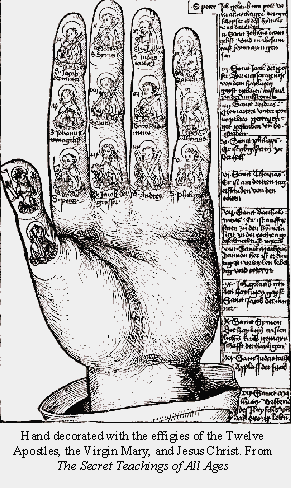 Ten Commandments
of the spiritual law just as the ten toes of the feet represent the Ten
Commandments of the physical law. In Esoteric Christianity, the thumb with
its three phalanges symbolizes the threefold divinity or the Holy Trinity--the
Father, Son, and the Holy Spirit, or the creative, preservative and destructive
aspects of God, from the point of view of Hinduism. Since most religions
and philosophies have their trinities what applies in Christianity regarding
its symbolism likewise applies to the rest as well. We might add that hands
raised upward as in prayer, is symbolic of one's aspirations towards the
spiritual life.
Ten Commandments
of the spiritual law just as the ten toes of the feet represent the Ten
Commandments of the physical law. In Esoteric Christianity, the thumb with
its three phalanges symbolizes the threefold divinity or the Holy Trinity--the
Father, Son, and the Holy Spirit, or the creative, preservative and destructive
aspects of God, from the point of view of Hinduism. Since most religions
and philosophies have their trinities what applies in Christianity regarding
its symbolism likewise applies to the rest as well. We might add that hands
raised upward as in prayer, is symbolic of one's aspirations towards the
spiritual life.
According to Christian Qaballistic thought, the fingers signify the four elements and the 3 phalanges of each finger the divisions of the elements: cardinal, fixed, and mutable. The 12 phalanges of the fingers of each hand when brought together represent the 24 Elders. The 6 phalanges of the thumb in this context signify the six days of creation.
In hand esotericism, the thumb is regarded as the king. Hindu metaphysics teaches that the thumb signifies the Paramatma, or the spark of the Universal Soul within the microcosm, and the rest of the fingers symbolizing the other major components of the microcosm.
Anthropologists consider the development of the thumb as a vital evolutionary step in the perfection of man's anatomy. The thumb is to the hand what the hand is to the brain. It is the function of the thumb in hand mechanics that allows for cultural and technological development. Classical Romans and Greeks regarded the thumb as sacred to Venus or Aphrodite, attributing to it a phallic significance. Thus, it came to symbolize fertility. The traditional Javanese of Indonesia would never point with the forefinger as it is considered impolite to do so (the writer found this rather amusing as a child); the thumb is used instead thus implicitly revealing its sacred and royal nature.
The thumb is all-important in palmistry, especially in Chinese cheiromancy. According to Oriental palmists, with the thumb alone it is possible to tell the predisposition of a person, his character, future, and state of health. The quality of a subject's chi, or energy is revealed by the size, color, and other characteristics of the thumb.
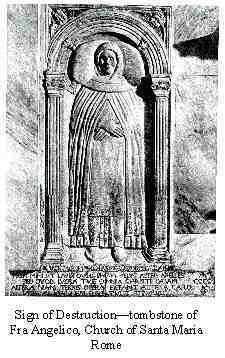 The dimension
of the thumb is an indicator of a person's will-expression. A large thumb
reveals great strength of character and practicality; in contrast, a small
thumb denotes weakness, and lack of willpower. The three segments of the
thumb disclose certain qualities. The size of the first phalange or top segment
shows whether a subject has good willpower, personal determination and other
leadership qualities; the second or middle phalange, shows logic, judgement
and reason; the third segment, which includes the "ball of the thumb," called
"the Mount of Venus" in palmistry, shows the strength of a subject's passion
and ability to love. One's karmic potential may be seen in the thumb as well
as the state of one's relationship to the environmental surroundings. The
thumb is a symbol of power and as such it is the one used in anointing rites
in the Christian churches.
The dimension
of the thumb is an indicator of a person's will-expression. A large thumb
reveals great strength of character and practicality; in contrast, a small
thumb denotes weakness, and lack of willpower. The three segments of the
thumb disclose certain qualities. The size of the first phalange or top segment
shows whether a subject has good willpower, personal determination and other
leadership qualities; the second or middle phalange, shows logic, judgement
and reason; the third segment, which includes the "ball of the thumb," called
"the Mount of Venus" in palmistry, shows the strength of a subject's passion
and ability to love. One's karmic potential may be seen in the thumb as well
as the state of one's relationship to the environmental surroundings. The
thumb is a symbol of power and as such it is the one used in anointing rites
in the Christian churches.
Habitually hiding the thumb in a closed fist indicates a defensive, introverted, disturbed and insecure person. Sucking the thumb is an infantile gesture. Psychologically speaking, the thumb is related to the superconsciousness.
Apart from the thumb, in palmistry, the fingers signify various strength or weakness of one's character according to their size and shape. Generally, long fingers belong to the philosopher and the intuitive person. It also shows that the subject is painstaking and loves detail. Fingers that are excessive in length indicate cowardice, cruelty, and a servile attitude. "Spider-fingers," or hands with extra-long fingers and with amazing flexibility is the condition known as "arachnodactyly," or the "Marfan syndrome" which was named after the French paediatrician, Antonin Marfan (d.1896). Such fingers are possible signs of various diseases present in the physical body such as tuberculosis, paralysis, and cardiac problems. Short fingers in contrast to long ones reveal alertness, impatience, and bluntness.
Fingers with spatulate tips indicate practicality and realistic attitudes.
Individuals with square tips love system, routine, and
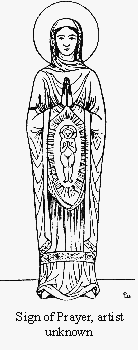 regularity.
Conic, or tapering tips shows impulsiveness, idealism, intuition, and the
love of art.
regularity.
Conic, or tapering tips shows impulsiveness, idealism, intuition, and the
love of art.
The index finger or forefinger was regarded as venomous in bygone days. Even in present times it is rude to point especially with this finger. When using the japa mala, tasbih, or rosary to count beads while chanting mantras and prayers, the forefinger should never be used for it is normally applied for mundane purposes and therefore, not considered sacred. The planet Jupiter is represented by this index finger. Psychologically, it is related to the conscious mind.
The middle finger is known by various names: medius, digitus impudictus (immodest finger), digitus obscenus (obscene finger), digitus infamis (disreputable finger), and fools's finger. It is a finger normally not used for wearing rings and is the finger of the planet Saturn. When extended solitarily while the other fingers folded, the middle finger represents the phallus, like the thumb. The folded fingers in this pose represent the testicles. It is often regarded as an obscene gesture. This finger of Saturn symbolizes the borderline state between consciousness and the unconsciousness.
The ring finger (anularis) is often called medio proximus (next to the middle) and also digitus medicus, "physician's finger". In past ages it was believed to be the healing finger and was used for various medical purposes. Wounds were supposed to heal quickly when stroked by this finger. Apothecaries of medieval days used the ring finger to mix their potions, and ointments were rubbed on the skin using it. Rings were especially used on this finger thus giving it its name. Apollo, or the Sun is the ruling deity of the ring finger. This digit represents the emotions.
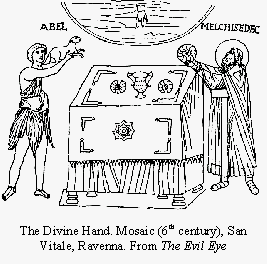 The little finger,
otherwise known as the "ear finger," is related to one's libido, one's sexual
force. Though a convenient instrument to clean one's ear with, it was named
"ear finger" because it had the power to stimulate one's psychic sense of
hearing by its insertion into the ear-canal in conjunction with chanting,
breathing and visualization exercises. This was especially practiced by the
Druids and those connected with the Mystery Schools. In seances, the little
finger is used as a point of contact between sitters, forming a vortex of
energy among them. The little finger represents the planet Mercury and the
unconsciousness.
The little finger,
otherwise known as the "ear finger," is related to one's libido, one's sexual
force. Though a convenient instrument to clean one's ear with, it was named
"ear finger" because it had the power to stimulate one's psychic sense of
hearing by its insertion into the ear-canal in conjunction with chanting,
breathing and visualization exercises. This was especially practiced by the
Druids and those connected with the Mystery Schools. In seances, the little
finger is used as a point of contact between sitters, forming a vortex of
energy among them. The little finger represents the planet Mercury and the
unconsciousness.
According to Chinese palmistry, the three phalanges of the fingers relate to three animalistic qualities. The first phalange closes to the palm represents greed; the middle phalange, hatred; the phalange at the uppermost, ignorance. In pictorial terms, these three vices are symbolized by the cock, the snake, and the pig. The spiritual opposites and antidotes to these negative qualities as taught in Taoist philosophy are non-attachment, wisdom, and compassion.
The elements are represented by the thumb and fingers. In Chinese cheiromancy, the thumb represents chi; the index finger, water; middle finger, earth; ring finger, fire, and the little finger, air. In Mudra Vigyan, the arrangement is quite different as we shall see later.
The papillary ridges on the fingertips with its manifold patterns have intrigued
man since recorded history. Many believe that
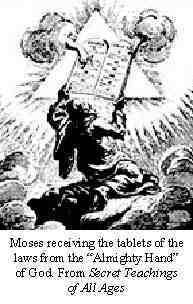 the labyrinthine
drawings and carvings found in caves, in ancient catacombs and tombs were
marks representing the identity of its possessor, in the same way that
fingerprints serve to identify us in our own era--it represented a person
almost like a signature. It is assumed by some that these engravings or tracings
function in an occult way making it possible for one to invoke from another
plane of existence the bearer with a mark similar to the one represented
in concrete form. In later periods this practice may have evolved to the
use of spirit sigils and seals in ceremonial magick.
the labyrinthine
drawings and carvings found in caves, in ancient catacombs and tombs were
marks representing the identity of its possessor, in the same way that
fingerprints serve to identify us in our own era--it represented a person
almost like a signature. It is assumed by some that these engravings or tracings
function in an occult way making it possible for one to invoke from another
plane of existence the bearer with a mark similar to the one represented
in concrete form. In later periods this practice may have evolved to the
use of spirit sigils and seals in ceremonial magick.
Rings are often worn on fingers to strengthen certain elements lacking in the physical, emotional, and mental bodies. Oft times we unconsciously feel a certain element wanting in our psychological and physical constitution and we seek to ameliorate this condition by stressing the importance of the finger that represents the element in question with an ornament. The degree of insufficiency is indicated by the size of the finger ornament. We have personally seen subjects wearing huge stones on almost all of their fingers. Fears and insecurities were apparent in their mien and facial expressions.
There are many so-called superstitions related to hands. According to one old belief found in European countries, is that the severed hand of a murderer may be used as a charm for gaining money and breaking entry into houses. This gruesome hand-charm is commonly known as the "Hand of Glory." A careful preparation is required to form the charm. After removing the fluid matter from the hand, it is salted and dehydrated; the fat is likewise extracted and mixed with wax; the hand and concoction are then formed into a candle--after which it is ready for its nocturnal excursion. Supposedly, it has the power to open up locks and bolted doors. It is believed to have a hypnotic effect causing anyone to see it to be petrified--like the mythological Medusa's head--and to consequently, obey its bearer.
According to its votaries, the hand of the crucified Jesus is believed to possess occult virtues. When worn as an amulet it is said to be an all-round good-luck charm. Prayers are said in conjunction with its presence on one's person. One prayer associated with this particular amulet is as follows :
"I carry a likeness of your pierced hand as a fervent symbol of your infinite kindness. Thou who has known such suffering, reach out your hand with a blessing. Thy pierced hand inspires this humble prayer that I may call on Thee to grant me peace and happiness. Amen."
Generally, charms in the form of hands, and in any pose--whether made of metal, stone, or inscribed--were often carried to ward off the "Evil Eye," or the ietattura as it is called in Southern Italy, or ain al-hasad, the "Eye of Envy," by the Arabs. The ancient Sumerians referred to it as IG-HUL, "Eye Evil." The Evil Eye is an ancient belief and not without any metaphysical substantiation. From the metaphysical point of view, eyes radiates energy and the quality of this force is tainted by the will and character of its emanator. Like all forces, the power flowing from the eyes may bless or curse others. There are many examples of amulets with a single eye on the palm of the hand. It is believed that this attracts the Evil Eye in accord with the Law of Attraction and absorbs its malevolent influences.
In order to counteract the malignant rays emanating from the eyes of negative individuals, the Hamsa Hand, or the Hand of Fatima charm was invented by the Arabs to re-direct these individuals' willful attention and malefic glances. Fatima was the daughter of the Prophet Muhammed and Khadijah. She was said to be a very virtuous woman, and it is believed that the charms representing her embody all of her solid virtues and would protect and bring good fortune to its bearer. The fingers of the Hand of Fatima symbolically represent the five pillars of Islam: 1) observance of the Ramadhan fast; 2) pilgrimage to Mecca; 3) alms-giving; 4) observance of the daily prayers; 5) profession of faith. The right hand is used to symbolize the Hand of Fatima, for it is the hand of honor, in contradistinction to the left, which is the "unclean hand." In most Eastern cultures it is considered rude and inappropriate to give things with the left hand.
 Like the Arabs,
the ancient Egyptians used a symbol called "the Great Hand" for various
protective purposes, one of which is to ward off evil magnetism. Most hand
amulets appear with a single eye on the palm. There are instances of this
in various cultures.
Like the Arabs,
the ancient Egyptians used a symbol called "the Great Hand" for various
protective purposes, one of which is to ward off evil magnetism. Most hand
amulets appear with a single eye on the palm. There are instances of this
in various cultures.
Amulets were not of value only to the living, but to the "dead" as well. In ancient Egypt, an amulet called dejebaui, or "two-fingers" were often placed among a mummy's swathings to help the deceased one to ascend and ride on the boat of Ra to the afterlife. This amulet depicted the index and middle fingers and was usually made out of black basalt, green stone, or obsidian.
During the enunciation of a pledge the right hand is often raised in the air. This originated in ancient customs where the raising of the hands were used to invoke the presence of the gods. Raising the right hand while making a pledge is therefore, tantamount to saying, "In the name of God . . ." Another version is to place the right hand on a holy book while uttering an oath. The significance is similar to the above.
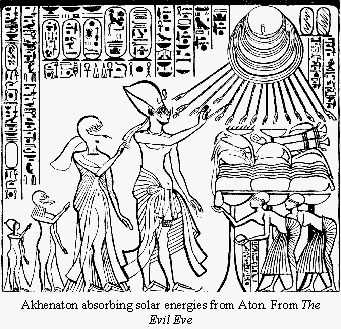 In the West,
many hand-signs have been made popular with its constant use throughout the
centuries. For instance we have the V-sign with the index and middle finger
raised while the others flexed and clasped by the thumb. This signified victory
and triumph. Similar to this is the Mano Cornuto, where only the index
and little finger are raised, and the rest folded onto the palms. This represents
horns, the devil, and the powers of evil. In the Orient, though, this sign
is said to have the power to ward off demons. Kuan Yin is often depicted
with this mudra. The Hung Society of China uses it as a sign of membership
and also to signify "Man," who embodies both Heaven and Earth. In Italian
witchcraft, the Mano Cornuto represents the crescent moon of the goddess
Diana.
In the West,
many hand-signs have been made popular with its constant use throughout the
centuries. For instance we have the V-sign with the index and middle finger
raised while the others flexed and clasped by the thumb. This signified victory
and triumph. Similar to this is the Mano Cornuto, where only the index
and little finger are raised, and the rest folded onto the palms. This represents
horns, the devil, and the powers of evil. In the Orient, though, this sign
is said to have the power to ward off demons. Kuan Yin is often depicted
with this mudra. The Hung Society of China uses it as a sign of membership
and also to signify "Man," who embodies both Heaven and Earth. In Italian
witchcraft, the Mano Cornuto represents the crescent moon of the goddess
Diana.
Another prominent hand sign is the Mano Fica, or figa, the sign of
coitus where the thumb protrudes between the first and second fingers of
the closed hand. It is of ancient origin The Romans and Etruscans were well
familiar with this sign having made images of it. Lika Mano Cornuto, the
latter sign is a popular amulet against negative forces. Crossing the index
finger with the middle finger also has a sexual significance. It symbolizes
the generation of life and by association a good outcome in one's hopeful
expectations, in one's enterprise possessing an ambiguous upshot. Another
sexual gesture much more explicit is the repeated insertion and withdrawal
of the forefinger of the right hand (the phallus) into a circle formed by
the thumb and index finger of the left hand (the vulva). The pose of the
left hand in the above gesture is also an "O.K."
sign.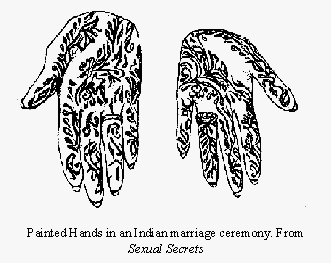
One of the old superstitions states that the sexual act brings good luck, good fortune, and prosperity. Perhaps because of its connection to fertility rites where the energy aroused and released during sexual ceremonies in open fields is believed to empower crops to grow abundantly. This belief is also one of the reasons why phallic and coital amulets were carried on one's person. Such charms were thought to bring about fortunate circumstances to the wearer. Sexual amulets made out of metal, bone, and wood were very popular in the classical worlds of Greece and the Roman Empire.
A hand sign that is mainly used by the sacerdotal priesthood of the Christian Churches, is the Mano Pantea. This is the sign of benediction posed by extending the thumb and first two fingers. The ring and little fingers are folded onto the palms. This mudra can be seen in the various paintings and murals of Jesus, the Saints, and priests. In Latin countries, the Mano Pantea is also often used as an amulet against the "Evil Eye," when thus employed it is normally covered with other protective symbols as reinforcements.
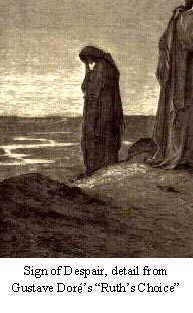 An upraised
thumb represents the erect phallus and is a sign for life, success, prosperity,
and acceptability. In contrast, the downward pointing thumb denotes defeat
and is the veto sign of condemnation or the death sentence. The middle finger
solitarily extended is one of the obscene gestures vulgarly referred to as,
"up yours." It signifies the command to perform an unnatural or perverse
sexual act.
An upraised
thumb represents the erect phallus and is a sign for life, success, prosperity,
and acceptability. In contrast, the downward pointing thumb denotes defeat
and is the veto sign of condemnation or the death sentence. The middle finger
solitarily extended is one of the obscene gestures vulgarly referred to as,
"up yours." It signifies the command to perform an unnatural or perverse
sexual act.
The famed Buddhist temple, Borobudur in the island of Java was constructed in the form of a mandala--a symbolic diagram of the cosmos. It is built in tiers, and at every level, there are numerous statues of Buddhas sitting in silent meditation. At each point of the compass the contemplative Buddhas assume a certain mudra. Those facing North bear the Abhaya (fearlessness) mudra, while those in the East show the Bhumisparsha (earth-touching) gesture. The Dana (giving) mudra is the hand pose of the Buddhas facing South, and the Dhyana (meditation) mudra of those facing West. Other mudras in the precincts of the temple are also to be found such as the Vitarka (debate) and Dharmachakraprayartana (teaching) gestures. This careful orientation of mudra bearers to compass points is symbolic. It is related to the quaternary principles to be found in the micro- and macrocosm. Comprehensive teachings concerning these may be found in the esoteric aspects of Buddhism and esotericism in general.
Symbolic marks or imprints are often found on the palms of statues and icons of Buddhas and Avatars. These marks indicate the power, virtue, or attribute of these God-incarnates. In Hinduism, Shiva appears the most with these hand drawings. Many kinds of marks exist. Several are to be found on just the palms of Gautama (Shakyamuni) Buddha alone. These palmar designs probably originated from the special marks that do physically appear on the palms. Cheiromancy identifies several of these as the square, the grille, the island, the cross or star, etc.
Hands were revered by the Hindus for centuries. One of the Shivaic tantrik
rituals of India gives the following liturgical adoration to the fingers
of the hands :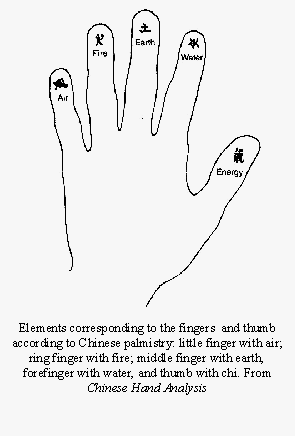
"Om Sham I bow to the thumbs Namah.
Om Shim I bow the index fingers Svaha.
Om Shum I bow to the middle fingers Vashat.
Om Shaim I bow to the ring fingers Hum.
Om Shaum I bow to the little fingers Vaushat.
Om Shah I bow to the front and back of hands Phat."
This chant is accompanied by specific mudras that purifies the subtle channels of the upper limbs. Not only is this ritual practiced in India but variations of it may be found in Bali as well.
In the marriage ceremonies and sexual rites of Oriental cultures such as in Tantrism, Yoginis or Shaktis often paint Yantras and other symbolical diagrams on the palms of their hands with henna or red dye. These diagrams normally have intricate floral patterns and are magical and hypnotic. They are used to attract, to mesmerize, and to empower themselves and their sexual partners.
In Islamic mysticism, specific gestures are often employed to help produce an altered state of awareness. Dervishes, for instance, pose their hands in specific mudras and hand signs while dancing and whirling around on a single spot. Some Sufi sects would trace the 99 names of God on their bodies with their right hand while engaging in zikir, or recollecting and focusing upon God through constant chanting.
In ancient times there were the Mystery Schools that taught to the selected few the laws and secrets of Nature and the Universe. History has recorded numerous of these schools and temples of esoteric knowledge among which were the mysteries of Isis, Sabazius, Cybele, Eleusis, Orpheus, Mithra, Asar-Hapi, and Odin. To state the mission and purpose of these metaphysical institutions we can do no better than to quote the eminent Freemason, Robert Macoy :
" It appears that all the perfection of civilization, and all the advancement made in philosophy, sciences, and art among the ancients are due to those institutions which, under the veil of mystery, sought to illuminate the sublimesttruths of religion, morality, and virtue, and impress them on the heart of the disciples. Their chief object was to teach the doctrine of one God, the resurrection of man to the eternal life, the dignity of the human soul, and to lead the people to see the shadow of the deity, in the beauty, magnificence, and splendor of the universe."
Within some of these Mystery schools, when the candidate is first initiated and accepted as a neophyte, he or she is often given an effigy of a human hand filled with symbolic images to contemplate. This hand is referred to as the Hand of the Philosopher, or the Hand of the Mysteries. When these symbols are understood, they provide the neophyte the keys to facilitate the transformation of their lower nature into divinity--from man to god. Regeneration, transmutation, and empowerment are the consequence of the application of the laws and principles that these ancient symbols represent. Among the many secrets that they portray, they teach how one may commune with one's Holy Guardian Angel, or one's Higher Self. The practitioner of the secrets of the Mysteries undergo a rebirth as a result of the growing influence and expression of the Higher Self in everyday consciousness.
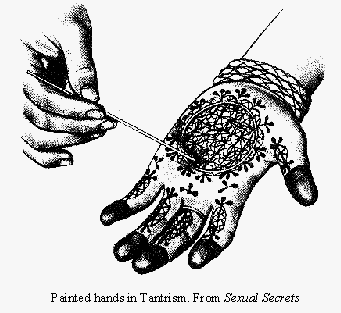 The Philosopher's
Hand may be regarded as an alchemical manual taking the conscientious student
step by step through the alchemical process. In Freemasonry, the Hand of
the Mysteries is known as the hand of the Master Mason. In some Masonic groups,
this is the title for the highest of the three degrees to be found in the
hoary and august fraternity. In this article we have included three examples
of these symbolical hands. The first illustration shown is a bronze hand
to be found in the British Museum. This specimen in the Mano Pantea gesture,
is covered with several important symbols among which are : a ram's head,
serpent, frog, vase, crocodile, turtle, cornucopia, scales, woman with child,
table with loaves of bread, and a cane. It is supposed to be Egyptian in
origin.
The Philosopher's
Hand may be regarded as an alchemical manual taking the conscientious student
step by step through the alchemical process. In Freemasonry, the Hand of
the Mysteries is known as the hand of the Master Mason. In some Masonic groups,
this is the title for the highest of the three degrees to be found in the
hoary and august fraternity. In this article we have included three examples
of these symbolical hands. The first illustration shown is a bronze hand
to be found in the British Museum. This specimen in the Mano Pantea gesture,
is covered with several important symbols among which are : a ram's head,
serpent, frog, vase, crocodile, turtle, cornucopia, scales, woman with child,
table with loaves of bread, and a cane. It is supposed to be Egyptian in
origin.
The second hand is a painting redrawn by J. Augustus Knapp from an 18th century
water color, and is taken from Manly Hall's "Secret Teachings of All Ages";
it was executed with the alchemical process in mind. In this illustration
there is a figure of a fish which symbolizes mercury--the principle of the
Spirit within the microcosm. This aquatic creature is surrounded by the element
of fire that represents the psychological aspect of man, or the human soul.
The rest of the fingers individually refer to the various steps of the spiritual
path of transmutation of the base nature of man into the resplendent gold
of divinity. Kaballistically, the hand shows the mastership of the crowned
thumb (the Will) over the four worlds represented by the fingers. These four
worlds are referred to as Atziluth, Briah, Yetzirah, and Assiah, or the World
of Archetypes, the World of Creation, the World of Formation, and the World
of Manifestation. Atop of the fingertips in Knapp's illustration are symbols
representing the various components of the microcosm: the lantern, the Concrete
Mind; the Sun, the Abstract Mind; the Star, Buddhi; the Crown, Atma. The
little finger holds aloft a philosophical key, which reveals the secrets
of the Mysteries. It also symbolizes the etheric body, which is considered
by Western
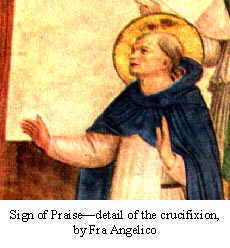 Initiates as
the key to occult development. The wings surrounding the hand is a sign for
transcendentalism--the things of the Spirit as opposed to matter. The eyes,
on the other hand, indicate the divine aspect of omniscience unfolded in
the Master Mason after having discovered and applied the "Lost Word."
Initiates as
the key to occult development. The wings surrounding the hand is a sign for
transcendentalism--the things of the Spirit as opposed to matter. The eyes,
on the other hand, indicate the divine aspect of omniscience unfolded in
the Master Mason after having discovered and applied the "Lost Word."
Hindu versions of the Hand of the Mysteries are diagrams known as Hastakara Yantra. Like their Western counterpart, these hands have various symbolic images depicted on them. Among other things they illustrate the relationship between man and the cosmic forces.
Like Hindu yoga, in Feng Shui, or Chinese geomancy, there are 5 elements:
Water, Wood, Earth, Fire, and Metal. In Chinese palmistry the little finger
is associated with air, the ring finger with fire, the middle finger with
earth, the forefinger with water, and the thumb with chi or metal as mentioned
before. This system differs from the Hindu yogic mudra tradition. First of
all, in yoga philosophy the fifth element is akasha or space, which although
correspond to chi, does not relate to metal at all. According to mudra teachings,
Angutha or the thumb corresponds to fire, Tarjani or the forefinger
to air, Madhyam or the middle finger to akasha, Anamika or
the ring finger to earth and Kanishthika, or the little finger to
water. In this work on mudras, we will stress more on the Hindu yogic assignment
of the elements to the fingers and thumb. The application of elemental mudras
in conjunction with the elemental tattvic tides is a great tool in elemental
magick.
Hand Signs in Religious Art
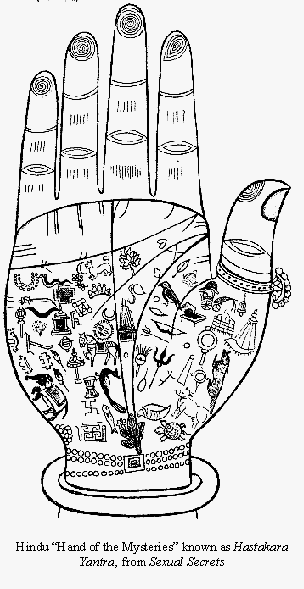 Hand signs
are an essential part of life. They are used to convey silently but powerfully
the intention and thoughts of their user. Humanity has for ages utilized
sign languages. It originated at a period of Man's evolution when he was
incapable of communicating his abstract and concrete thoughts with words
and phrases lingually. He was solely dependent upon gesticulations as a media
for expressing his feelings and passions. This primitive form of communication
is still being used by modern man in certain situations and expediency. Not
surprisingly, the intelligent classes of anthropoids also make use of hand-sign
movements such as the beating of the chest in expressing anger or authority.
The fictitious Tarzan could not resist aping this gesture from his Darwinian
guardians.
Hand signs
are an essential part of life. They are used to convey silently but powerfully
the intention and thoughts of their user. Humanity has for ages utilized
sign languages. It originated at a period of Man's evolution when he was
incapable of communicating his abstract and concrete thoughts with words
and phrases lingually. He was solely dependent upon gesticulations as a media
for expressing his feelings and passions. This primitive form of communication
is still being used by modern man in certain situations and expediency. Not
surprisingly, the intelligent classes of anthropoids also make use of hand-sign
movements such as the beating of the chest in expressing anger or authority.
The fictitious Tarzan could not resist aping this gesture from his Darwinian
guardians.
Certain specific hand signs are to be found all over the world. Many cultures preceding and succeeding the Christian era share common gestures that express particular concepts. It has been suggested that these gestures all have comparable basic ideas or significance because of their appearances in similar contexts. This is known through their repeated portrayal in the many paintings, sculptures, and drawings of the past available for our scrutiny and study. Mediaeval Christian art of saints, prophets, and the Holy Trinity, and the gods and devas of Egypt, India and the South American Indians are often depicted with similar hand positions.
Contemporarily, we find school children perpetuating certain traditional signs that have their origin in religion and pagan practices. For instance, crossing the fingers as a sort of prayer so that they may be free from chastisement when interrogated of their wrong behavior--this may be a corrupted form of the ecclesiastical use of the Sign of Benediction.
There are many professions that make use of signs only known to their members or affiliates. For instance, merchants, masons, tramps, gamblers, prostitutes--all have signs known only to themselves with which they signal one another.
Because of the profuse use of signs and gestures by the Italians in their everyday life, anthropologists believe that these descendents of Romulus and Remus are not able to carry out a satisfactory conversation if they were prevented the use of gesticulation.
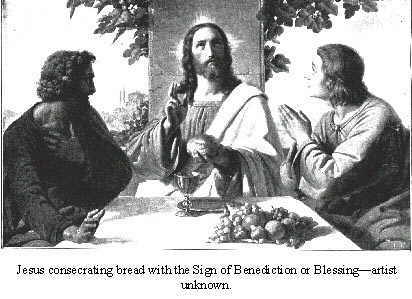 Occultists believe
that most gestures or hand signs that are found in religion and in society
have a common origin in the prevalent Mystery Schools of the past where they
were used in a ceremonial setting. Modern Freemasonry as one of the many
descendents of these Occult Temples of Wisdom and Knowledge still perpetuates
this custom of hand signs in their initiatory rites.
Occultists believe
that most gestures or hand signs that are found in religion and in society
have a common origin in the prevalent Mystery Schools of the past where they
were used in a ceremonial setting. Modern Freemasonry as one of the many
descendents of these Occult Temples of Wisdom and Knowledge still perpetuates
this custom of hand signs in their initiatory rites.
Like the Freemasons, secret societies in the Orient also have ceremonies where esoteric signs are employed. One of the secret associations of China, the Hung Society, have certain signs and gestures with which communication is carried-out among the affiliated members--not only in the ceremonies but in everyday life as well. The aforementioned society, likewise, have plentiful mudras or signs representing the principles of their philosophy. In its doctrines, the five elements of Taoist esotericism are signified by poses that are also to be found elsewhere around the globe.
The mystical Dervishes, established by the Sufi Rumi, apply hand signs for
occult purposes. They invoke the Divine Presence by utilizing these signs
that corresponds with the 99 names of God in their dance rituals, as already
alluded to
previously.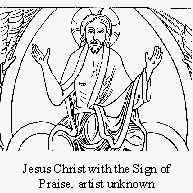
Artists of all ages have secret codes and teachings with which they unveil in their artwork. In archaic times it was a dangerous matter to openly publicize occult and spiritual teachings that religions steeped in fundamentalism were dramatically opposed to for these teachings threatened their political structure and lessen their value in the eyes of an evolving humanity. It is for this reason that the Mystery and metaphysical schools established by the ancient sages went underground and operated clandestinely. They promulgated their teachings through signs and symbols that acted on one level as their calling card.
As a support for our statement above, we might mention the Tarot cards as an example. These esoteric cards nowadays degraded to a method of divination, was actually a training manual for the promotion of one's spiritual and divine expression in the world of matter. The pictorial diagrams of the Major and Minor Arcana holds secrets that the casual operator of the cards are unaware of. When properly understood the Tarot cards take us step by step to our goal of human perfection through the alchemical process.
Having gone underground the Initiates of the Mystery Schools were quick to
appropriate the popular religions to embody their secret doctrines and practices.
Not only are satanic elements quick to jump on the bandwagon of spiritual
establishments, angelic forces are adept in letting the Dark Ones think that
they have the upper-hand while in the meantime
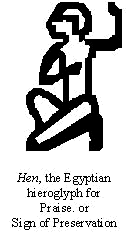 reorganizing
their army and infiltrating stealth-like into their religious camp upsurped
from the Light forces. Like Dante, angelic consciousness wrote books of their
spiritual wisdom using Christian imagery; or painters like the multi-genius
Leonardo Da Vinci, who represented important occult precepts in his artwork
using Christian themes. Music composers too, cleverly inserted mystical formulas
and teachings into their symphonies, concertos, operas and sonatas. As an
example, the musical piece, "The Magic Flute" of Mozart comes to mind. However,
what is relevant here is that occult signs are portrayed profusely, graphically
in art, and we would do well to focus on that.
reorganizing
their army and infiltrating stealth-like into their religious camp upsurped
from the Light forces. Like Dante, angelic consciousness wrote books of their
spiritual wisdom using Christian imagery; or painters like the multi-genius
Leonardo Da Vinci, who represented important occult precepts in his artwork
using Christian themes. Music composers too, cleverly inserted mystical formulas
and teachings into their symphonies, concertos, operas and sonatas. As an
example, the musical piece, "The Magic Flute" of Mozart comes to mind. However,
what is relevant here is that occult signs are portrayed profusely, graphically
in art, and we would do well to focus on that.
Above we mentioned Da Vinci who conveyed teachings in his art productions.
There were many others, like Albrecht Durer, Fra. Angelico, and Raphael.
The signs that these artists and many others around the world for countless
generations represented in their paintings and drawings were related to the
secrets of initiation and the process of spiritual development where human
genius, I.Q., creativity, morality, and holiness were raised to a sublime
degree. The ancient Greeks, Chinese, Hindus and many other cultures and
civilizations all had their initiates who were highly developed mentally,
morally, and spiritually--these men and women were well beyond their time
and the lay people viewed them as demi-gods and apotheosized
them.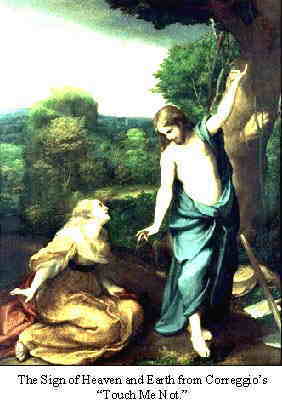
The artists and artisans of the secret Mystery schools made used of almost every material available for conveying the metaphysical doctrines of the Ancient Wisdom, such as papyri, stone, bronze, terracotta, clay, mosaics, ivory, enamels, stained glass, gems, crystals, cloth, wood, canvas, tiles, leather, etc.
The most prominent feature of the art productions of the Initiates of the
Mystery Schools were the hand signs and this was known as the Ancient Sign
Language which was transmitted from Age to Age, culture to culture. J.S.M.
Ward made a thorough study of this secret sign language and in his book,
"The Sign Language of the Mysteries," he identifies several of these hand
signs and gestures to be found mostly in Christian art although by no means
limited to Christendom. In his book Ward offers many instances of each sign.
He explains that these hand poses are to be found all over Europe, Africa,
Asia, India, Oceania, the Americas, ancient Crete, Polynesia, Babylonia,
etc., in short, all over the world. Among the hand signs that he discusses
are:
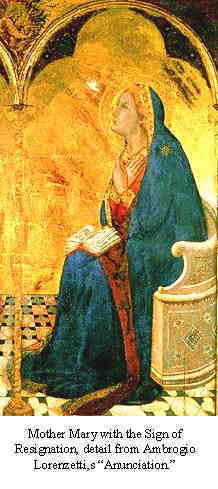 |
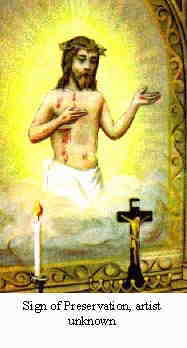 |
Sign of Preservation
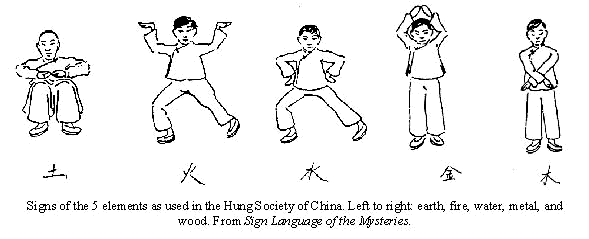 There are
many variations of this sign. Basically, it is posed by placing one hand
over the heart and raising the other at an angle at the elbow with the hand
pointing upwards. In some forms, it is the index finger that points skyward.
In most depictions of this sign it is the left hand rather than the right
that is raised. There are numerous instances of this pose in Egyptian art.
The Egyptologist, E.A. Wallis Budge, interprets the hieroglyph with this
sign as Hen, or "praise." The god Anubis is often represented with
this hand posture, and murals in the palaces and tombs of the pharaohs often
illustrate votaries of Ra with this significant gesture. This sign is also
found in the Minoan and Mycenaen civilizations. In Christian art, Jesus is
often portrayed assuming many occult hand signs, among these is the Sign
of Preservation. The sun god Damuzi of the Babylonians while descending into
the underworld likewise bears this sign, as depicted on certain objects.
In his book mentioned previously, J.S.M. Ward tells of a Roman sarcophagus
in the Bardo Museum, Tunis, showing the emergence of Jonah from the whale
that swallowed him for three days, and making the Sign of Preservation--in
effect, indicating that his life was saved. Among the mystical Islamic sects,
the Whirling Dervishes appropriate the use of this important hand pose in
their ceremonial rites and practices. In archaic times, the Sign of Preservation
was adopted by those petitioning the deity for the preservation of oneself
or someone else, and
There are
many variations of this sign. Basically, it is posed by placing one hand
over the heart and raising the other at an angle at the elbow with the hand
pointing upwards. In some forms, it is the index finger that points skyward.
In most depictions of this sign it is the left hand rather than the right
that is raised. There are numerous instances of this pose in Egyptian art.
The Egyptologist, E.A. Wallis Budge, interprets the hieroglyph with this
sign as Hen, or "praise." The god Anubis is often represented with
this hand posture, and murals in the palaces and tombs of the pharaohs often
illustrate votaries of Ra with this significant gesture. This sign is also
found in the Minoan and Mycenaen civilizations. In Christian art, Jesus is
often portrayed assuming many occult hand signs, among these is the Sign
of Preservation. The sun god Damuzi of the Babylonians while descending into
the underworld likewise bears this sign, as depicted on certain objects.
In his book mentioned previously, J.S.M. Ward tells of a Roman sarcophagus
in the Bardo Museum, Tunis, showing the emergence of Jonah from the whale
that swallowed him for three days, and making the Sign of Preservation--in
effect, indicating that his life was saved. Among the mystical Islamic sects,
the Whirling Dervishes appropriate the use of this important hand pose in
their ceremonial rites and practices. In archaic times, the Sign of Preservation
was adopted by those petitioning the deity for the preservation of oneself
or someone else, and
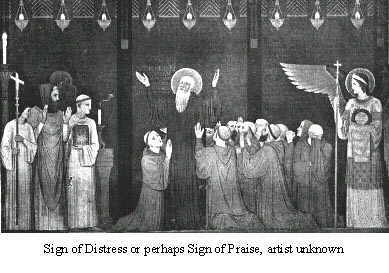 with the strong
conviction that the request was granted. In contradistinction to this, it
was also employed by those of high spiritual attainment assuring others of
their salvation. In Christianity it is often associated with the Second Person
of the Holy Trinity.
with the strong
conviction that the request was granted. In contradistinction to this, it
was also employed by those of high spiritual attainment assuring others of
their salvation. In Christianity it is often associated with the Second Person
of the Holy Trinity.
Sign of Faith
This sign resembles the Sign of Preservation with the exception that the
hand pointing upwards is not squared at an angle and not pointing to the
sky. It points outwards away from the body. Like the above sign, many examples
of these are to be found distributed all over the world.
Sign of Distress/Surrender
When the two hands are lifted upwards above the head with the elbows bent--this
is known as the Sign of Distress. This is one of those universal hand signs,
and it seems almost human nature to fling the hands into the air when in
despair or when faced with overwhelming pressure as a sign of psychological
turmoil and the "giving-in" to a certain situation, or when feeling helpless.
Therefore, it is not surprising when we find the use of this sign all around
the globe as depicted in artistic works, and experientially in everyday life.
This sign is an appeal for aid and is universal like many of the other signs
mentioned in this section. Its use can be traced as early as 3,000 B.C.
Quetzalcoatl, one of the gods of the Mayans, is sometimes depicted
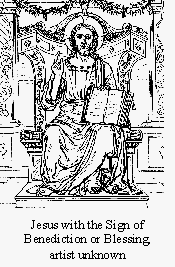 with this hand
pose.
with this hand
pose.
Sign of Death
This hand sign is related to the throat chakra, or psychic center. It consists
of placing the hand's edge-whether left or right hand-at the throat. The
thumb points directly at the throat itself. It is actually a moving gesture
and is effected by moving the hand's edge across the throat as if to cut
it. This sign suggests that something is to be terminated or killed, or that
it is already dead. The ancient Romans and Egyptians were well familiar with
this sign and in some Christian paintings of the crucifixion, the disciple
John the Beloved is portrayed with this sign of cutting the throat while
standing before the crucified Jesus. Arabs and Sudanese make use of this
sign to swear their innocence uttering that God should cut their throats
should they be telling a falsehood. Several American Indian tribes employ
this sign as a salutation meaning that they are "faithful or true unto death."
Sign of Praise
This sign is similar to the Sign of Distress except that the hands are not
lifted above the head but extended forward in front of the body, inclining
upwards with the hands facing outwards and the elbows bent. This is also
a greeting sign and the initial start of the salaam gesture of the Arabs.
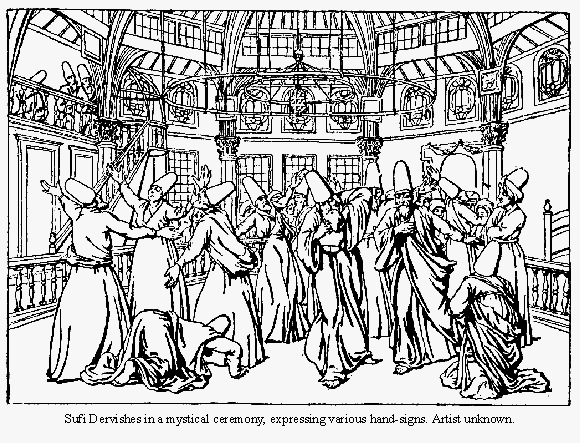
Sign of the Heart
This sign is accomplished by placing the hand over the heart. A survival
of this gesture in modern times is the bowing of a gentlemen to a lady with
his hand to his heart as a salutation of respect, or as it was customary
in the 17th and 18th century in Europe, for a man to remove his hat and to
place it at the heart region when greeting the opposite sex. This is a hoary
sign. It is to be found in ancient Egypt, Rome, and even in Crete in the
Minoan period. It is also to be seen in the mosaic art of the many old churches
and cathedrals. The meaning of this sign is a little obscure. It has been
suggested that it signify faith or fidelity. However, with the placement
of the hand at the heart we may make a conjecture and say that it concerns
the finer sentiments of a person conveyed to the object of his attention
or affection.
Sign of Prayer
This is probably the best known of ecclesiastical signs which is also used
by the lay person. It consists of placing the palms of the hands together
with the fingertips pointing in an upward direction. Another Sign of Prayer
is the folding of the hands together intertwining the fingers.
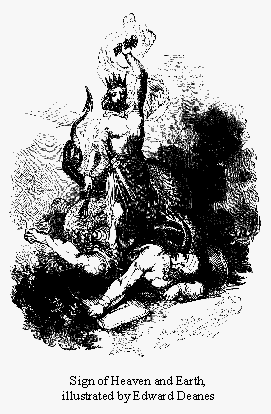
Sign of Benediction or Blessing
In Christianity, this sign is utilized mainly by the priesthood. It is used
by priests to bless people and consecrate objects. To assume this sign, the
third and fourth fingers are folded onto the palms with the index and middle
fingers held upright. The thumb may also be erect or it may be folded upon
the ring finger. The significance of the erect thumb and first two fingers
in the act of blessing is that the grace, virtue, and power of the Holy Trinity
are being conveyed. Occultly, the subtle energies flowing from the hands
are stronger at the terminal points of these digits than they are at the
ring and little fingers.
Sign of Secrecy
This is a sign that has survived to contemporary times and can continually
be seen in everyday life. It probably originated in Egypt during the heydays
of the Mystery Schools. This sign was associated with Horus, or Harpocrates--one
of the forms of Horus. This sign is executed by putting a finger to the lips
as though to seal it. Its significance is that of secrecy and silence. In
the Mystery Schools the Initiates were pledged to a vow of secrecy, never
revealing the secrets of the Temple unless authorized to do so. Even nowadays,
the following injunction may be found in occult schools: "know, dare, do,
and be silent."
Sign of Destruction
When one or both of the hands are seen on the solar plexus in religious art,
it signifies destruction. We can understand the significance of this sign
when viewed from a metaphysical point of view. The solar plexus chakra is
a storehouse of potent energies that may be used for good or ill. When this
center is awakened prematurely in a disciple's life, it may cause
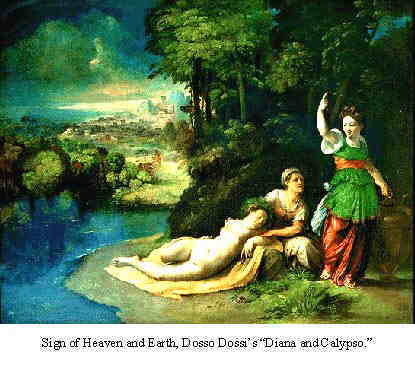 problems that
the disciple is not equipped as yet to handle. Physical, physiological, and
psychological--not to mention karmic difficulties--might arise when a disciple
foolishly stimulates this center. The solar plexus chakra is an emotional
focus and by being polarized at this level one may have trouble extricating
oneself from the lower instinctive and egoistic nature. The disciple may
be destroyed by this center and evolutionary progress postponed, thus the
hand gesture on the solar plexus came to be associated with destruction.
There are numerous examples of the Sign of Destruction in Art. In India,
Shiva, the Destroyer is often depicted with this gesture. Many Greek and
Christian art-forms also bear personages with this sign.
problems that
the disciple is not equipped as yet to handle. Physical, physiological, and
psychological--not to mention karmic difficulties--might arise when a disciple
foolishly stimulates this center. The solar plexus chakra is an emotional
focus and by being polarized at this level one may have trouble extricating
oneself from the lower instinctive and egoistic nature. The disciple may
be destroyed by this center and evolutionary progress postponed, thus the
hand gesture on the solar plexus came to be associated with destruction.
There are numerous examples of the Sign of Destruction in Art. In India,
Shiva, the Destroyer is often depicted with this gesture. Many Greek and
Christian art-forms also bear personages with this sign.
Sign of Exultation
This hand pose is a sign of joy and satisfaction; it is done by extending
the hands above the head with the fingertips of the hands touching. Though
not as numerous as some of the other signs, there are several examples of
these in Christian art. In China, the Hung Society uses this sign to represent
the metal element.
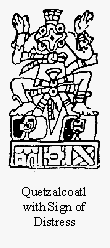
Sign of Reverence
Reverence in the sign language of the Mysteries, is indicated by the shading
of one's eyes with the hand, whether left or right. In some variations of
this sign the eyes are fully covered. This sign originated in cultures where
it was impolite to look directly at one's superior; for instance, a soldier
would make this sign when saluting a superior officer. Another possible origin
of this sign is the experiences had by blessed individuals during angelic
visitations. The presence of these spiritual beings compels the beholder
to shield their eyes from the angelic radiance. This hand gesture is not
unique to any race for it is to be found distributed all over the world--in
Ceylon, Australia, Africa, Asia, and Europe.
Sign of Horror
One of the dramatic signs, the gesture of horror is made by extending the
right hand, palm outwards, while the head is turned to the right as though
refusing to see something objectionable or frightening. The left hand is
this gesture point outwards and in a downward direction as if trying to expel
something. Examples of this sign in art may be seen in the Vatican and in
the British Museum.
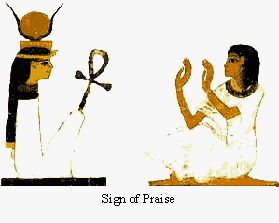
Sign or Resignation
This sign consists in crossing the arms upon the chest with the fingertips
of the right hand on the left shoulder and the fingertips of the left hand
on the right shoulders. This gesture is sometimes portrayed with the right
hand over the left, but the reverse is regarded as a more proper representation
according to tradition. This is another one of those signs that may have
originated in the Mystery Schools of Egypt. The god Osiris and the statues
representing Egyptian pharaohs are often depicted in this pose by artisans.
For some specific reason the Egyptians also buried their dead in this manner,
with the hands of the mummy crossed upon their breast. Even the sarcophagi
or mummy cases of the deceased bear a pictorial resemblance of them with
the same sign. In the Renaissance, artists often depicted Mother Mary with
such a hand pose. Like the many hand gestures described herein, the Sign
of Resignation generates a certain occult power of which we shall discuss
later in an upcoming article when we apply and incorporate the sign in our
mudra practices. The occult function of a sign is just as important as its
esoteric meaning, perhaps even more so.
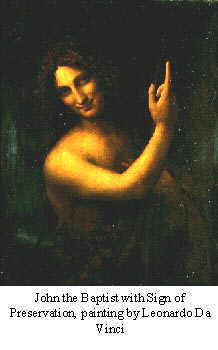
Sign of Heaven and Earth
This sign is executed by extending one hand above the head pointing skywards,
and the other extended downwards pointing to the earth. According to Ward,
the significance of this sign in Christianity is that someone had descended
to Earth and later re-ascended to Heaven. Or alternatively, ascended to Heaven
and later descended to Earth. There are numerous examples of this sign in
Christian art related to the raising of Lazarus, the descent of Jesus into
Hell to save the inhabitants, and Jesus' resurrection. There are many variations
of this sign. Sometimes the hand with its open palm pointing upwards has
its fingers together; occasionally we find examples where the index finger
points upwards while the rest of the fingers folded onto the palm. The British
Museum has a collection of Babylonian objects where the Sign of Heaven and
Earth may be seen. In Greece, examples of this sign are associated with the
Eleusinan Mysteries.
Sign of Despair/Regret
Regret, despair, and sorrow is indicated by resting the head upon the right
hand and the left arm, which is horizontally across the solar plexus, supports
the right elbow with its hand. Occasionally, this position is reversed. There
does not seem to be any strict rule to this. In paintings with crucifixion
themes, the Virgin Mary is often depicted with this hand position. There
are examples of this sign of Persian and Greek origins preserved in museums
all over the
world.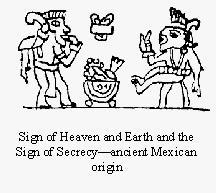
Having explained the various hand signs to be found in art it would be appropriate if we were to emphasize that the signs described above are not merely symbolic or gestures without any occult significance. It is not too commonly known that these signs generate certain virtues as they modify, purify, intensify, and empower one's auric energy-structure or one's surroundings in some subtle manner. These signs are mudras with occult values. Mantras, incantations, and liturgies often accompany the signs. Most votaries of religion are unaware that their ceremonies are actually magickal rites and processes that call forth unseen influences. For instance, making the Sign of Preservation by the spiritually evolved occult practitioner, evokes spiritual and angelic forces that protects the person or persons to whom the sign is being directed to. The sign assures the petitioners and recipients that they will be protected and preserved from negative psychic attack.
It is instinctive for people to assume specific mental and physical attitudes when interacting with divine forces. We unconsciously feel hand signs and gestures to be efficacious in aiding the establishment of a contact with higher intelligences and requesting their intercession.
Hand-signs, or mudras are of great benefit to our well-being. In future articles, therefore, we will apply this mystical science in a practical way that may be practiced by the average person.
****************
Copyright © 2001 Luxamore
We thank you for the purchases of the items made from
our website as the proceeds from these help us to maintain our website and
to continually update it with new informative articles.
Pronunciation Guide to the
Mantras/Prayers/Chants
A = Ah as in father
C = Ch as in choose
E = a as in pay
G = Gh as in grape
I = ee as in tree
U = oo as in tool
Letters not mentioned are pronounced as in the English
language.
For orders, price list, or inquiries please,
If you would like to be on our mailing list to |